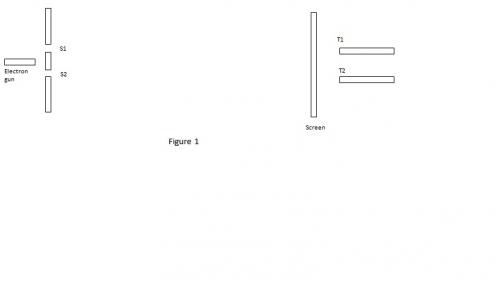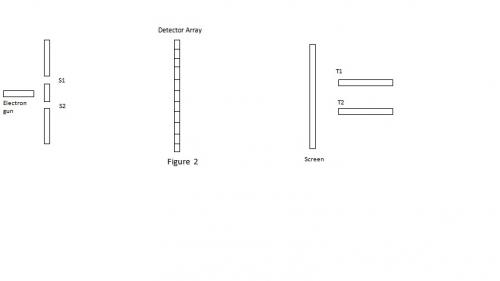

rajeesh
Members-
Posts
16 -
Joined
-
Last visited
Profile Information
-
Favorite Area of Science
quantum mechanics
Recent Profile Visitors
The recent visitors block is disabled and is not being shown to other users.
rajeesh's Achievements

Quark (2/13)
0
Reputation
-
As per the Wheeler Feynman absorber theory, there cannot be electromagnetic radiation without an emitter and absorber. If we had only a single electron in the universe then disturbing it (accelerating it) would not produce any radiation since there was nothing to absorb it. Hence it would also not experience any radiation resistance. In the case of electromagnetic waves in the real universe with so many emitters and absorbers, we cannot use radiation resistance to check the presence of absorbers in the vicinity of the emitter. This is due to the fact that radiation resistance is the same in all the directions. This can be attributed to the fact that electromagnetic forces are long range forces. Since the universe is smooth on a large scale, the number of absorbers in any direction is uniform and hence radiation resistance the same in all directions. The same would apply for gravity since it is also a long range force. But what about the nuclear forces - the strong and weak interaction. These are localized over small distances. So do the particles interacting with these forces have knowledge about absorbers in their vicinty. Is the process non local?
-
A normal detector. You mean to say that it will affect the photon's behaviour in the future?
-
Thanks. The point I was trying to make was that if the system has to be causal, then there should not be any difference in the detection pattern at the detector array irrespective of whether the screen is up or down. Because if there is a difference, then we can predict whether the screen is going to be up or down in the future. Or is the whole thing more complicated than this?
-
Also Please let me know if attempts have been made to conduct such an experiment.
-
Consider the below (figure 1), an electron gun is made to emit electrons one by one through two slits S1 and S2. There is a screen at the other side and a pair of telescopes (with electron detectors inside them) T1 and T2 trained on the slits S1 and S2 respectively. We can choose to bring down the screen even after the electron has crossed the slits. If we choose to keep the screen up, we get an interference pattern as more and more electrons move through the slits. But if we choose to remove the screen the electron is always detected either at T1 or T2 with a 50:50 chance. Now if we choose to insert an array of detectors in between the slits and the screen/telescopes (figure 2), the electron will be detected in atleast one of the detectors in the array as it moves from the slits to the screen. How does it affect the entire set up? Consider that we have the screen up. Since we have the detectors the interference pattern should disappear. If we have the screen down, then the electron shows up only at either of the telescopes. So wouldn't the electron be detected at the detectors which are in line with the telescopes T1 and T2. The question is whether there would be any difference in which detector (inside the array) the electron shows up depending on whether the screen is up or down?
-
The photon seems to know whether there is a screen or a telescope focused on the slits. Can we measure this knowledge somehow by placing an array of detectors between the slits and the screen/telescope. What would happen if we placed such a detector?
-
Why is that in the delayed choice experiment it is argued that the choice of observation in the present decides what had happened in the past? Why cannot it be put down to simply state that the photon in the past, had looked into the future and determined the choice of observation (wether there is a screen or a telescope trained on the slits) and behaves accordingly. The photon could be looking into the future and if it finds a screen it will decide to act as a wave. If on the other hand it finds a telescope pointed onto the slits it decides to behave as a particle.
-

Electromagnetic induction and energy conservation
rajeesh replied to rajeesh's topic in Classical Physics
Could you please provide more details or references on the virtual photons. Does the system really look into the future, looks like it will violate causality but can it really happen? -

Electromagnetic induction and energy conservation
rajeesh replied to rajeesh's topic in Classical Physics
question is - can we really explain the entire transaction without involving quantum mechanics or virtual photons coming from the future -

Electromagnetic induction and energy conservation
rajeesh replied to rajeesh's topic in Classical Physics
But if the delay is 2t0, what is the state of the system at (t1+t0), we have the magnet which has not lost any energy and the coil with the current induced in it which is extra energy. -

Electromagnetic induction and energy conservation
rajeesh replied to rajeesh's topic in Classical Physics
Lets take the frame of the moving magnet. If the magnet starts to move at time t=t1 and lets assume that t0 is the time taken for the flux linking the coil to change due to motion of the magnet. t0 = (distance between the magnet and the coil/velocity of light) Now when exactly does the magnet begin to experience resistance. Is it at t1 or (t1+t0) or (t1+2t0) I think energy is really conserved here but is the entire transaction causal? -

Electromagnetic induction and energy conservation
rajeesh replied to rajeesh's topic in Classical Physics
But in this case it is the magnet which is moving towards the coil. How will the same argument hold in this case? -

Electromagnetic induction and energy conservation
rajeesh replied to rajeesh's topic in Classical Physics
But if the magnet does not experience resistance instantly that would violate the law of conservation of energy as we have a moving magnet (whose energy has not been retarded) and also current in the coil at the instant the effect of the moving magnet reaches the coil. Can a causal interpretation really explain the energy transfer in this case? -

Electromagnetic induction and energy conservation
rajeesh replied to rajeesh's topic in Classical Physics
So the magnet knows that there is a coil, waiting to absorb its energy in the future and hence it starts experiencing resistance instantly as soon as it starts moving. Now if we assume that there is no coil at the instant when the magnet starts moving, but the decision to place the coil in the field of the moving magnet is taken only after the magnet starts moving but before the effect of the moving magnet has reached the point where the coil is placed. In this case would the magnet experience resistance instantly? If yes would it mean that the magnet is looking into the future and it knows what the decision is going to be.(to place the coil or not) -

Electromagnetic induction and energy conservation
rajeesh replied to rajeesh's topic in Classical Physics
But how would the current induced in the coil, oppose the moving magnet instantly since there is separation between them? As the magnet starts moving it would take time t = (distance b/w the magnet and the coil/velocity of light) for the current to be induced in the coil and another equal time t for the effect of this induced current to travel back to the magnet and oppose its motion.


